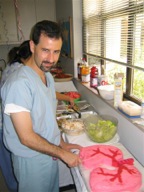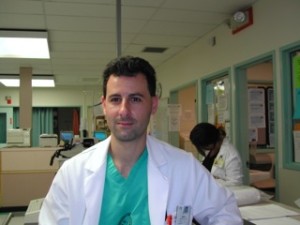
November is PAH awareness month. It seems fitting to reflect on my career choice to specialize in the treatment of patients with PAH. I was first exposed to patients with pulmonary hypertension when I was a medical student at University of California San Diego. The most complicated and sickest patients were traveling from all over the United States for evaluation of pulmonary hypertension caused by chronic blood clots (CTEPH). These patients were so ill going into surgery and so well by the time they left the hospital.
How I Got Hooked on PAH

When I moved to Boston to train in my Internal Medicine residency, I had the privilege of working with Dr. Michael Landzberg. He was the PAH and adult congenital heart expert. As residents we cared for his patients. His patients were predominantly young men and women who were catastrophically ill. They were admitted for what was then a “new” treatment called Flolan. These patients would improve over the course of a week in the hospital. However during my three years in Boston, I would care for many of these patients when they returned to the hospital with complications of their therapy. Dr. Landzberg was the ultimate doctor. He knew his patients up and down. He had such a deep understanding of their physiology, the intricacies of their failing right ventricles and pulmonary arteries. At the same time he new his patients as individuals—mothers and fathers, sons and daughters.

I chose to pursue a fellowship in pulmonary and critical care medicine. I was drawn to the complexities of critical illness but remained intrigued by PAH and how it straddled the world of cardiology and pulmonary medicine. At University of California San Francisco I worked with Teresa DeMarco, a cardiologist who was a tireless advocate for her PAH patients. At this time, clinical studies with Bosentan and Treprostinil were ongoing. By the time I decided to move to Stanford University to train for a year in pulmonary vascular disease (PAH), the first oral agent was approved. During my year at Stanford, I had the privilege of caring for such courageous patients that were willing to put up with Flolan and subcutaneous Remodulin. I could see that patients were starting to live longer and quality of life for patients was improving.
My Goals As A PAH Specialist
I chose to move to Phoenix, Arizona where there were no physicians with advanced training in PAH. Patients for the most part were traveling to UC San Diego or Stanford University for care. For the past 11 years I have worked to create a program that strives to deliver the absolute best care for patients. We see our patients not as a disease but as people. From the beginning we chose to take a long-range perspective. Not to be satisfied with keeping patients alive for a few years. We chose to look at 10-year survival when average survival was 3-4 years. As one of the first PAH programs in the country that was not based in a university we faced many challenges. The care of complex patients that require complex therapy requires an infrastructure of nurses and support staff. Furthermore, I was not satisfied to just deliver medical care that was already approved. I wanted to provide my patients with access to the latest research studies.
With the help of my dedicated team, we have participated in more than 30 PAH studies. We have participated in clinical trials with Ambrisentan (Letairis), IV Treprostinil (Remodulin), Tadalafil (Adcirca), Imatinib (Gleevec), Macitentan (Opsumit), Selexipag, Oral Treprostinil (Orenitram), inhaled nitric oxide, and the Remodulin Implanted pump system.
In looking back over the past 15 years, the field of PAH has come so far. We now have 13 treatments with more expected to be approved by the FDA soon. Patients now are treated with multiple agents. There are pills, inhaled medicines, and continuously infused therapies. What was once a neglected disease by the pharmaceutical industry is now a hot area for drug and device development. While we don’t yet have a cure, our patients are feeling better and living longer. I am grateful to have been able to make contributions to the lives of so many wonderful people adn I am sad that our therapies have fallen short for patients that have lost the battle with PAH. Nonetheless, I remain committed to advancing the care of our patients and advocating for them as they make their journey with PAH.
